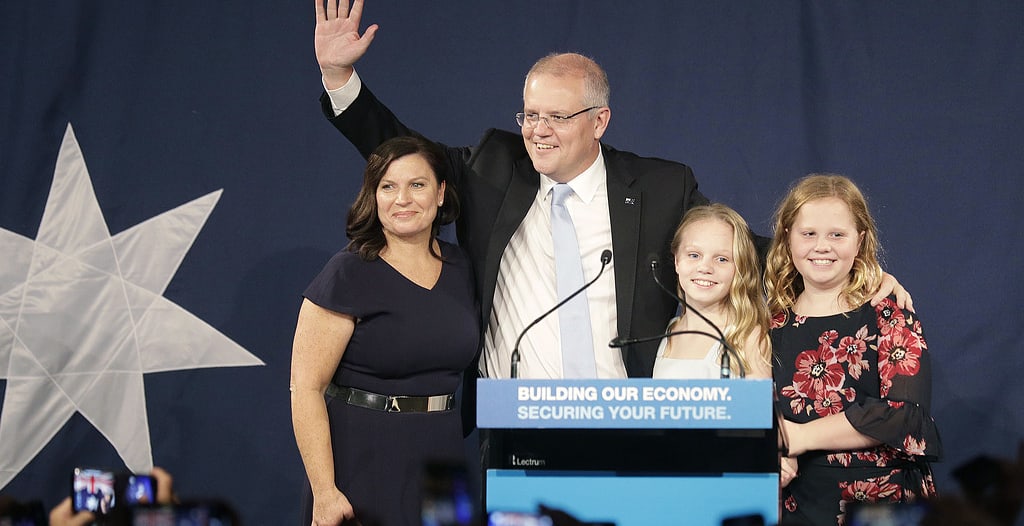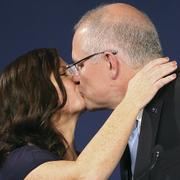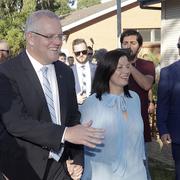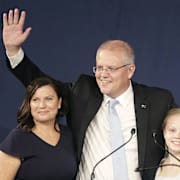
Morrison mot majoritet efter oväntade vinsten
Premiärminister Scott Morrison ser nu ut att säkra en majoritet för sin liberalkonservativa koalition efter sin oväntade vinst i helgens val i Australien, enligt landets tv-kanal ABC.
Regeringskoalitionen får enligt prognosen 77 platser i parlamentet som har 151 platser.
Premiärministern vann över Labors Bill Shorten som ledde opinionsundersökningarna i ett val som handlade mycket om klimatfrågan. Shorten stod för en hårdare klimatpolitik medan Morrison har visat sitt stöd för kolindustrin.
bakgrund
Så styrs Australiens parlament
Wikipedia (en)
The Parliament of Australia (officially the Federal Parliament, also called the Commonwealth Parliament) is the legislative branch of the government of Australia. It consists of three elements: the Crown (represented by the Governor-General), the Senate and the House of Representatives. The combination of two elected chambers, in which the members of the Senate represent the states and territories while the members of the House represent electoral divisions according to population, is modelled on the United States Congress. Through both chambers, however, there is a fused executive, drawn from the Westminster system.The upper house, the Senate, consists of 76 members: twelve for each state, and two each for the territories, Northern Territory (including Christmas Island and the Cocos (Keeling) Islands) and the Australian Capital Territory (including Norfolk Island and the Jervis Bay Territory). Senators are elected using the single transferable vote proportional representation system and as a result, the chamber features a multitude of parties vying for power. The governing party or coalition has not held a majority in the Senate since 1981 (except between 2005 and 2008) and usually needs to negotiate with other parties and Independents to get legislation passed.The lower house, the House of Representatives, currently consists of 151 members, each elected using full-preference instant-runoff voting from single-member constituencies known as electoral divisions (and commonly referred to as "electorates" or "seats"). This tends to lead to the chamber being dominated by two major political groups, the centre-right Coalition (consisting of the Liberal and National Parties) and the centre-left Labor Party. The government of the day must achieve the confidence of this House in order to gain and remain in power.
Although elections can be called early, every three years the full House of Representatives and half of the Senate is dissolved and goes up for reelection. A deadlock-breaking mechanism known as a double dissolution can be used to dissolve the full Senate as well as the House in the event that the Upper House twice refuses to pass a piece of legislation passed by the Lower House.The two Houses meet in separate chambers of Parliament House (except in a rare joint sitting) on Capital Hill in Canberra, Australian Capital Territory.
Läs mer (19 maj)
Omni är politiskt obundna och oberoende. Vi strävar efter att ge fler perspektiv på nyheterna. Har du frågor eller synpunkter kring vår rapportering? Kontakta redaktionen


